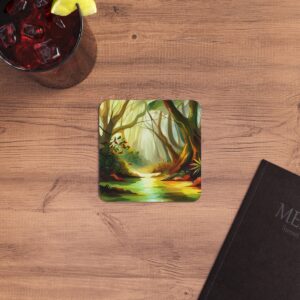Introduction:
Fashion has always been a dynamic reflection of cultural shifts and societal movements. The 21st century has witnessed the rise of two influential generations, the Millennials and Generation Z, each leaving an indelible mark on the world of fashion. Moreover, the LGBTQ+ community has played a significant role in reshaping and challenging traditional norms, pushing the boundaries of self-expression through clothing. This article explores the fascinating intersection of Gen Z and Millennial fashion, with a special focus on the LGBTQ+ community, showcasing how these trends have evolved and intertwined in the ever-changing landscape of style.
Millennial Fashion: Breaking Boundaries and Nostalgic Revivals
The turn of the millennium marked a departure from the fashion norms of previous decades. Millennials, born between the early 1980s and mid-1990s, embraced a diverse range of styles that reflected their rebellious spirit and desire for individuality. Grunge, hip-hop, and rave culture influenced Millennial fashion, resulting in a mishmash of oversized flannel shirts, baggy jeans, crop tops, and neon-colored accessories.
One distinctive feature of Millennial fashion was the revival of nostalgic elements from past eras, such as the ’90s. From chokers and platform shoes to high-waisted jeans and windbreakers, Millennials found inspiration in the fashion trends of their childhood, blending retro aesthetics with a modern twist.
Gen Z Fashion: Digital Natives and Sustainable Style
As Millennials paved the way for a more eclectic and diverse fashion landscape, Generation Z, born in the mid-1990s to early 2010s, took things a step further. Growing up in the era of smartphones and social media, Gen Z became true digital natives, influencing their fashion choices and styles.
Sustainability emerged as a crucial aspect of Gen Z fashion, with a heightened awareness of environmental issues. Thrift shopping, upcycling, and sustainable fashion brands gained popularity among Gen Z, showcasing a commitment to ethical consumerism. This generation also embraced gender-neutral fashion, challenging traditional gender norms and promoting inclusivity in the fashion industry.
LGBTQ+ Influence: Queer Style and Unapologetic Expression
The LGBTQ+ community has long been a trailblazer in the world of fashion, contributing significantly to the industry’s evolution. Queer style is characterized by its boldness, vibrancy, and a fearless embrace of self-expression. Both Millennials and Gen Z have been instrumental in mainstreaming LGBTQ+ fashion, creating a space for queer individuals to express their identities through clothing.
For Millennials, the 2000s saw an increased visibility of LGBTQ+ celebrities, influencing fashion trends. The rise of androgynous styles, rainbow-themed accessories, and gender-fluid fashion choices marked a departure from heteronormative ideals.
Gen Z has continued this trajectory by demanding greater inclusivity and representation within the fashion industry. Brands are now incorporating diverse models, promoting body positivity, and featuring LGBTQ+ influencers in their campaigns. The rise of queer designers and fashion icons has further propelled the LGBTQ+ community into the forefront of the fashion scene.
Intersectionality: Where Gen Z, Millennial, and LGBTQ+ Fashion Meet
The intersection of Gen Z, Millennial, and LGBTQ+ fashion has given rise to a rich tapestry of styles that defy conventional norms. The fluidity of gender expression, the celebration of diversity, and the rejection of rigid beauty standards are hallmarks of this intersectional fashion movement.
Gender-neutral clothing has become a significant trend, with brands releasing collections that blur the lines between traditional menswear and womenswear. The fashion industry has witnessed an influx of unisex designs, reflecting a collective effort to break free from the limitations of gendered fashion.
Furthermore, the embrace of bold colors, vibrant patterns, and eclectic accessories has permeated both Gen Z and Millennial fashion, creating a visual language that transcends boundaries. This newfound freedom of expression allows individuals to showcase their unique identities proudly.
Conclusion:
The evolution of fashion through the lens of Gen Z, Millennial, and LGBTQ+ influences highlights a collective desire for self-expression, inclusivity, and social responsibility. As we navigate the ever-changing landscape of style, one thing remains clear: the power of fashion to reflect and shape cultural attitudes will continue to be a driving force in shaping our collective identity. The intersectional nature of these trends serves as a testament to the strength of diverse communities coming together to redefine the fashion narrative for generations to come.







